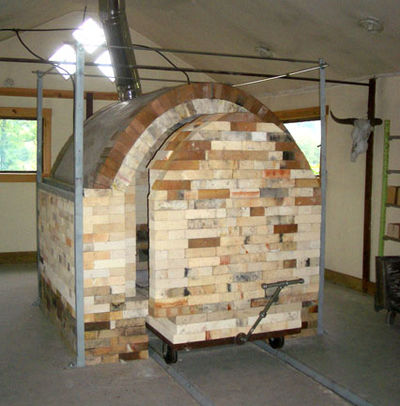Kiln: Difference between revisions
| Line 49: | Line 49: | ||
===Bricks=== | ===Bricks=== | ||
Additional structural strength can be gained from [[CEBs]] upon firing in a kiln (although this is unnecessary in many applications]]. | Additional structural strength can be gained from [[CEBs]] upon firing in a kiln (although this is unnecessary in many applications]]. | ||
=See Also= | =See Also= | ||
Revision as of 12:57, 25 February 2012
Overview
A kiln is a giant oven that enables the hardening, burning, drying, or firing of materials.
Easily constructed with CEB or Concrete, a Kiln serves a wide number of useful functions
Research
There are multiple types of kilns, including batch feed and continuous feed processes. A general purpose kiln that can be used in a variety of applications could serve to be quite useful in a GVCS Community.
Specifications
- Bricks 900-1000 °C
- Firebricks 1650°C
Product Ecology
| From | Uses | Creates | Enables |
|---|---|---|---|
Components |
|
Applications
Wood Drying
A freshly felled tree cut into logs and run through the Sawmill will produce Green Wood. While viable as a construction material in many applications, green lumber has a nasty habit of warping and shrinking over time (which can cause issues).
One approach toward addressing this is simple air drying. The lumber is stacked in a clean, cool, dry and shady area, atop raised foundations, with spacers (called stickers) laid crossways at regular intervals for ventilation. While air-drying Sawmill lumber is a viable option (and produces high-quality lumber), it is a process that can take months to years.
A kiln accelerates this process by rapidly heating and drying the lumber, enabling on demand fabrication of wood products.
Bricks
Additional structural strength can be gained from CEBs upon firing in a kiln (although this is unnecessary in many applications]].





